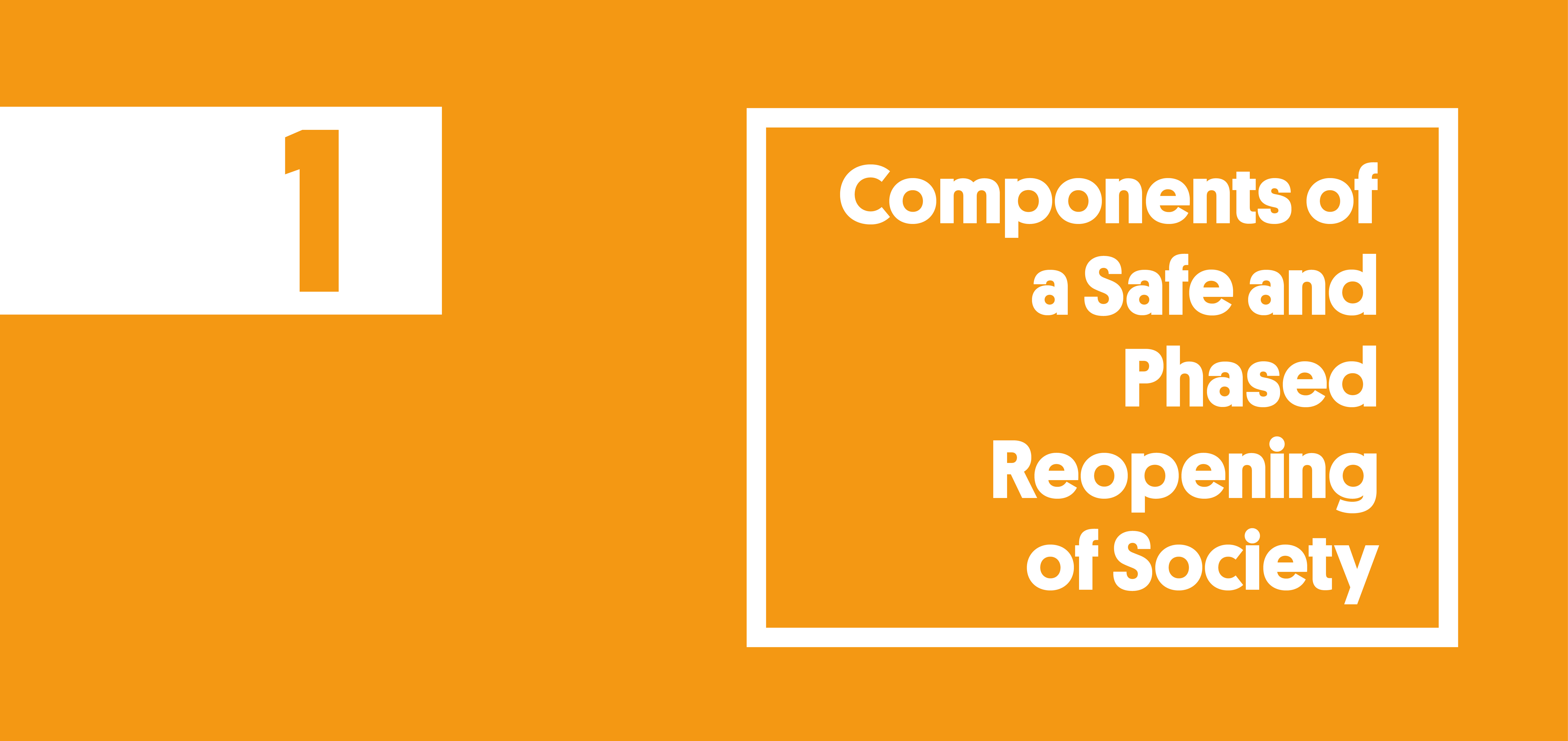Components of a Safe and Phased Reopening of Society
Series COVID-19 & Response Strategy #1
09.04.2020This document is the first in a series of discussion notes that address fundamental questions about COVID-19 crisis and response strategies. The papers have been prepared on the basis of the best scientific information available and can be updated as it evolves.
After a period of confinement and the extension of the state of alarm for the SARS-CoV-2 coronavirus, the measures applied and the strengthening of the health system are showing their effectiveness. The revival of the economy and the normalization of the lives of citizens require the gradual and controlled reduction of confinement measures, while establishing effective epidemiological controls to prevent the recurrence of the pandemic. We have the opportunity and the responsibility to take advantage of the margin of maneuver gained through the efforts of citizens. This document offers elements of what we might call “precision public health” that will help achieve a controlled opening of confinement.
Objectives of the reopening
- Protect vulnerable populations (by age or chronic conditions). This control is necessary until a minimum level of immunized population has been reached.
- Reactivate the economy and gradually recover employment, cushioning the expected drop in GDP and the extraordinary fiscal effort made by the States and the European Union.
- Reduce the collateral damage of the crisis in the health, well-being and education of citizens. These include:
- The impact on physical and mental health
- The educational impact for children and youth
- The added lack of protection of vulnerable groups such as the elderly in residences or loneliness, abused women, families in poverty, immigrants without papers or homeless people
Basic elements of the opening strategy
- Case detection and contact identification
- Assessment of population immunity levels
- The stratification of the population according to criteria of vulnerability and priority for economic recovery.
The use of technological tools will be of great help, but the ethical and legal implications must be urgently addressed.
- What tools would allow us to more accurately target case isolation to relax total confinement?
- How to estimate the level of immunity of the population to define where, how and when it is possible to relax the containment measures?
- What criteria will help us complete epidemiological information and proactively identify the population that should be protected?
Case detection and contact identification
Beyond social distancing, which is the most effective preventive measure, the detection and isolation of cases and contacts are the pillars to control an epidemic. Therefore, any effort to end confinement requires an integrated permanent surveillance system.
Assessment of population immunity
There is evidence to suggest that immunity is generated after having overcome the infection (although it is not yet known with certainty how long this immunity lasts). A recent model calculates that up to 15% of the Spanish population could have been infected, although this estimate has a high uncertainty range. Establish some effective mechanism for identifying those who have acquired immunity and who can return to work and deal with the most vulnerable populations.
- So-called "serological passports" have been suggested as an option whose advantages and disadvantages must be considered.
- Estimate the actual prevalence of people with immunity in a region or group, to guide or adapt the restriction measures.
- Geographic (for example, municipalities where there are more than 30% or more than 5,000 people over 60 years of age);
- Occupational (strategic collectives or sectors including healthcare workers, law enforcement and defense, high-performance nonessential industry / employment, transportation, education);
- Population (individuals with a higher risk of becoming ill, including those over 60 years of age or with chronic conditions who live in densely populated areas or with younger generations; and individuals with a higher risk of transmitting the disease, including children and youth in densely populated areas).
Stratification of populations according to criteria
The transition to the next phase seeks to alleviate the human, social and economic cost of restrictive measures. To do this, it must try to be limited to areas, groups or individuals at greater risk of serious illness or of higher priority for economic recovery. This is why we propose to stratify according to indicators of vulnerability beyond epidemiological ones (number of cases and seroprevalence), which inevitably reflect a past situation.
Other factors to consider:
- Population density
- Population mobility
- The capacity of the health system in the area.
Other considerations
The appearance of situations of high risk or reactivation of the transmission of the infection in certain places or groups can force to recover of selective way some of the measures of limitation of movements.




